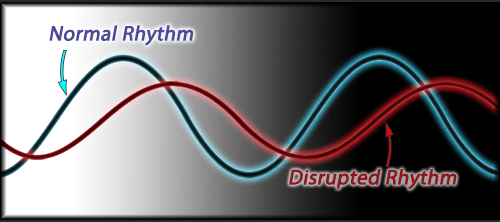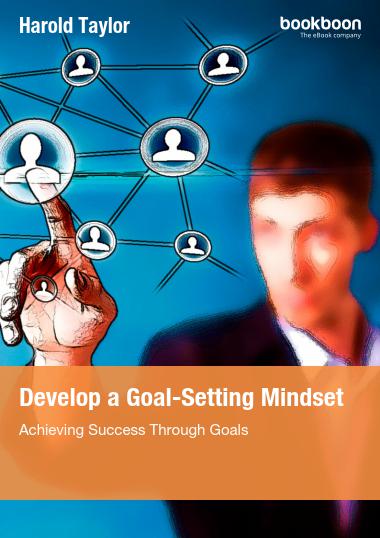Pay attention to your body’s clock
Have you ever felt completely exhausted after work with barely enough energy to flop on a couch after ordering a family-size pizza for dinner? You had completely used up your supply of energy for the day, and yet an hour or two later you felt as energetic as ever. But by then the kids had stopped trying to get your attention and had been enveloped by their electronic games, and you were left to waste this “second wind” on TV and social media. If so, you are not alone. Relatively few people have learned to take advantage of their natural body rhythms and surf the waves of high and low energy levels throughout the day. Time for a refresher in Chronobiology 101.
Starting in the mornings we tend to get sleepy every 90 minutes. These 90-minute cycles are ultradian rhythms, which determine when we feel alert and productive. We perform best during these 90-minute cycles, with about a 20 minute “sleepy zone” in between.
If you force yourself to work on tasks requiring high energy after the 90 minutes, your performance suffers, and you get a low return on your invested time. It makes sense that when you are concentrating on the same task for a long time, your brain needs a break. But a change is relaxing and doing low-energy work like checking e-mail is usually okay.
If we are to be productive at work and energetic during our personal or family time, we must listen to our body clocks and not just the ones on the wall. The world was created with built-in cycles. The earth has its seasons, the moon has its phases, the flowers bloom at different times, and we have our cycles of waking, sleeping, and hunger and so on. It has been found that our bodies even have clocks in our lungs, liver, and pancreas, not just our brain. It may be discovered that we have a clock in every cell of our body.
For maximum health and performance, tune into your body. Once you develop a sleep schedule, stick to it. Missing sleep will result in a shifting of the ultradian rhythm. If you must short-change your sleep one night, make it up by taking a nap during the afternoon “sleep zone.” Some of us are “larks” and others are “night owls”. Some may have 90-minute high-energy cycles, and some may have 120-minute cycles. There is no such thing as a “one size fits all” program for energy management. There can’t be one, because we are all unique. I doubt whether scientists have yet to find identical brain scans.
Work with your biological clock
Our internal organs operate in patterns called circadian rhythms that repeat during the 24-hour day. When these rhythms are out of sync it can affect your health not just your energy level, including everything from obesity and diabetes to heart problems and cancer.
Since our body is created to work in sync with the natural world, and our body clock relies on sunlight and darkness and periods of rest, our modern lifestyle – including late nights, artificial lighting and overuse of digital devices and stimulants – we are hard-pressed to maintain our health and energy at an optimum level.
Bright light in the morning sets the body clock for the day, while darkness puts the internal organs into their nighttime mode. But the bright light from computer screens is telling our bodies to start a new day, as does snacking at night, which simulates breakfast. No wonder our circadian rhythm is out of balance and we experience such things as insomnia, mood changes, digestive problems, and low energy.
What can we do about it? Do all you can to live in sync with your biological clock. This means going to bed at a regular time each night, turning off digital devices an hour or more before retiring, making sure you are not exposed to light while in bed, avoiding late snacks at night, opening the window drapes, and bathing yourself in light when you wake up, and starting the day off with breakfast. You should also avoid coffee, alcohol, or other stimulants before retiring, get a minimum of 7 to 8 hours sleep, and if possible, take a nap in the afternoon on days that you get shortchanged on sleep. The more you are in sync with nature and your biological clock, the greater your energy reserves.
Work with your energy cycles
When we sleep, we do so in approximately 90-minute cycles throughout the night, each cycle consisting of five stages – four stages of non-REM sleep (about 75 percent to 80 percent of our sleep time) and one stage of REM sleep (about 20 percent to 25 percent of our sleep time). The first REM stage begins about 90 minutes into sleep and then the cycle begins again about every 90 minutes until you wake up.
What most people do not realize is that these 90-minute “sleep cycles” run through the entire day. We obviously don’t sleep during the day, but the cycles become waves of high and low energy and are referred to as ultradian rhythms. Our internal clocks are critical to our personal performance as well as our health and well-being. Our body has many internal “clocks,” each operating independently but in constant communication with one another.
In a few of my books and articles and all my seminars, I talk about scheduling projects in 90-minute segments. I have always known that I was more productive working in sixty or ninety-minute chunks of time, and I suggested all kinds of reasons for it – such as it was the maximum amount of time, I could work without having to be interrupted or even interrupting myself. But I never knew until several years ago that ultradian waves of high and low alertness had been identified. One study of young violinists back in 1993 revealed that the best violinists all practiced the same way – in the morning in three segments of no more than 90 minutes with a break between each segment. The same thing was noticed among other musicians as well as athletes, chess players and writers.
I recommend that people find their high energy time in the morning and start working on their top priority for about 90 minutes. Then take a break of about 15 or 20 minutes before starting the next task. Following the second 90-minute work session there should be a break of at least an hour before resuming. (This could be lunch and a brief walk.) It will take time to get into the right pattern. You must listen to your body to determine the best start time and the actual duration of your high-alertness cycle.
You do not necessarily have to take a coffee break, go for a walk, or do stretches during your breaks if you switch to a different type of task. There are three basic types of activity – mental, physical, and emotional. If you have been working on a mental task requiring intense concentration, cleaning your work area, filing, or checking messages on Twitter or Facebook for twenty minutes might be just as relaxing to the brain.
The problem is that people have been fighting their natural body rhythms with coffee and other stimulants and developing inefficient work habits just as they have short-circuited their natural sleep cycles with late nights, artificial lighting and stimulating electronics.
Are you a lark or a night owl?
It is important to recognize that everyone’s biological clock is not the same. Larks are at a full head of steam by mid-morning and probably produce their most creative work before noon. But do not expect them to be fully awake for an evening meeting. And never expect them to be creative at that time. “Owls,” on the other hand are usually most alert around 6 p.m., and frequently do their best work in the evening.
According to John Medina, in his book Brain Rules (2008), it is not a case of being one or the other. Most people are in between a lark and an owl and you could be anywhere on the continuum. Only about 10 percent of us are larks, 20 percent are night owls, and the rest are somewhere in between.
There is a core period, somewhere in the middle of the day, where all groups are operating on all cylinders. So, unless you know how everyone’s biological clock is calibrated, it is probably best to schedule brainstorming sessions or difficult projects halfway through the day. But avoid the “nap zone” somewhere between 1 pm and 3 p.m. According to Medina, 3 p.m. is “when the brain wants to take a nap and doesn’t really care what the owner is planning to get done at that time.”
Morning people, according to The Secrets of Our Body Clocks by Susan Perry and Jim Dawson, tend to have less flexible circadian rhythms so they benefit more from a structured daily routine. You could track your alertness and body temperature to determine how much of a morning person you really are. A morning person will usually have a temperature that rises sharply in the morning, reaches a plateau by early afternoon, and begins its descent before 8:00 p.m. in the evening.
Or more simply, reflect on your behavior. If you go to bed early and wake up early, jump out of bed in the morning raring to go, do your best work early in the day and wake up just before your alarm goes off every morning, you are probably a “morning person”.
But do not expect everyone else to be the same way. These biological rhythms are innate, and we should organize our lives to work with them, not against them.
Note: This article has been excerpted from my e-book, Manage your Personal Energy, published in 2015 by Bookboon.com.
.
Successful People Read. A Lot.
What do Warren Buffett, Mark Zuckerberg, Elon Musk and Oprah Winfrey have in common? They all read - a LOT! If you want to be successful you need to read. We have over 30 short ebooks designed to get you booked up fast!


